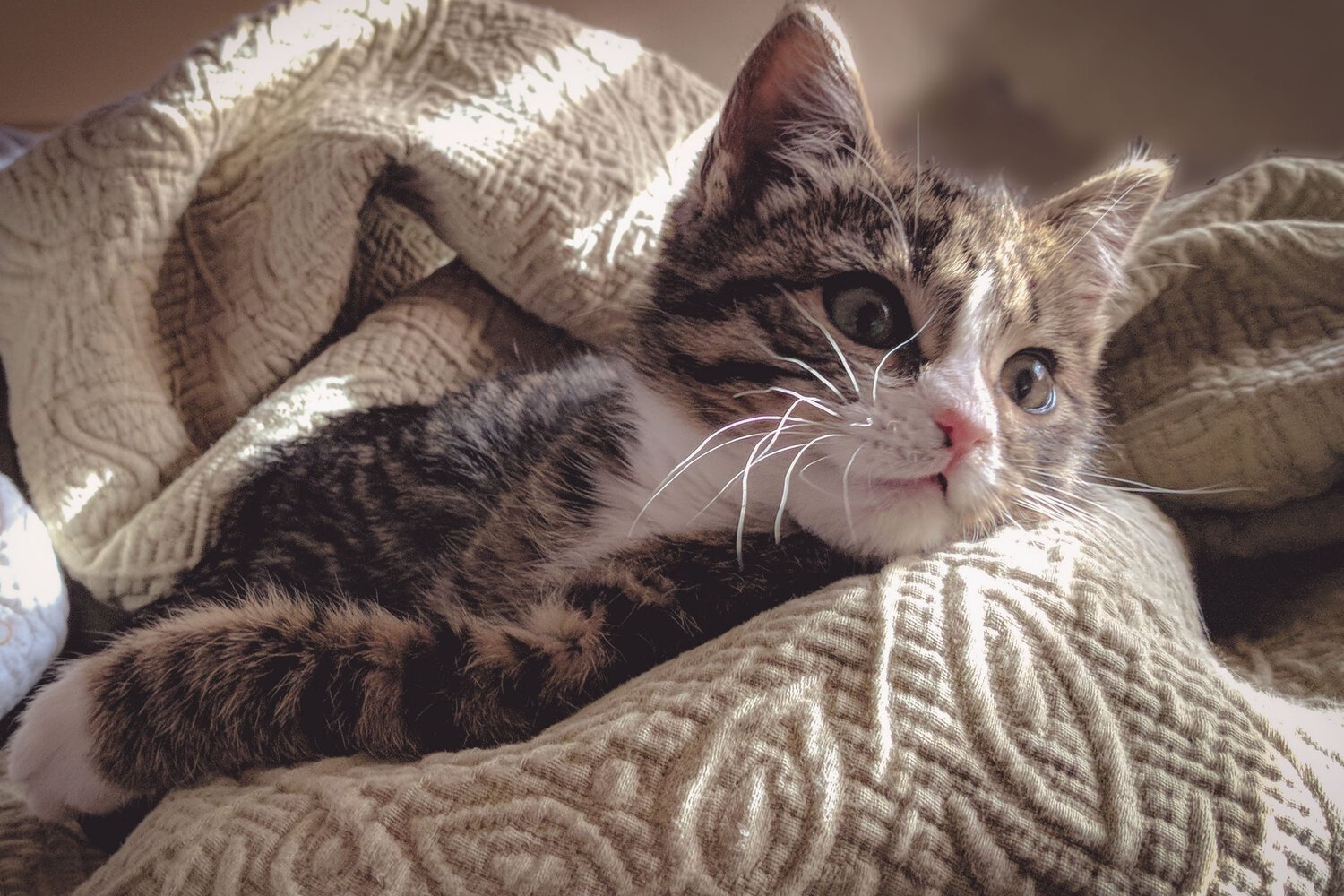
CAT DERMATOLOGY
Common Feline Skin Conditions and Treatments to Keep Your Cat Happy and Healthy

How do I recognize feline skin conditions?
To identify common cat skin conditions, watch for these telltale signs:
Hair Loss: Keep an eye out for bald patches or increased shedding beyond the usual amount
Head Shaking: Excessive head shaking might indicate a skin problem or an issue with your cat's ears.
Excessive Grooming: If your cat's grooming behavior seems more frenetic and less relaxed, it could signal itchiness or discomfort.
Parasites: Check for common parasites like fleas and ticks, which may be visible on the skin.
Abnormal Coat: During brushing, be attentive to any red, scaly, patchy, or scabby areas on your cat's skin.
If you notice any of these signs, scheduling an appointment with your veterinarian is essential for a thorough examination and proper diagnosis.
What are common cat skin conditions?
Some common cat skin conditions we see at our clinic include:
External Parasites: Fleas can trigger itchy skin and allergies, leading to scratching and potential infections. Ticks may cause raised bumps or localized swelling.
Ear Issues: Mites, especially in kittens, can result in itchy ears, while polyps may develop, requiring an otoscopic exam. Ear infections demand prompt veterinary attention.
Contact Allergies: Similar to humans, cats can develop allergies to environmental factors.
Food Allergies: Cats can experience itchy faces or generalized itchiness due to food allergies. Your vet may recommend a food trial to identify and address potential sensitivities.
Feline Dermatitis: Often linked to allergies from grooming products, food, or environmental irritants.
Skin Cancer: New or changing skin spots should prompt an immediate veterinary visit, as cat skin cancer is potentially serious.
Cat Acne: Some cats are prone to acne, requiring prescription medication for treatment.
Promptly scheduling a vet appointment upon noticing these symptoms is crucial for early diagnosis and effective treatment.
How do you treat cat skin conditions?
The initial step in addressing your cat's skin conditions involves obtaining a diagnosis from your veterinarian, a process that may vary depending on the specific issue and requires time to reach an accurate conclusion and treatment plan. For flea-related problems, your vet will initiate flea control measures. In the case of food allergies, a dietary switch may be necessary.
Immune modulating medications might be employed to suppress allergic responses, while anti-itch medications can enhance your cat's comfort. If ringworm is detected, antifungal medication will be prescribed. Certain medications may require veterinary administration, while others can be administered at home. Collaborating closely with your veterinarian, accurately detailing your cat's symptoms is crucial for a comprehensive examination and the subsequent recommendation of an appropriate treatment strategy
FAQ
-
Feline dermatitis can present as red, inflamed skin with itching and discomfort. Identifying the cause is crucial for effective treatment.
-
With proper treatment, many cases of feline dermatitis can be managed or resolved. However, it's essential to address the root cause for long-term relief.
-
Bacterial skin infections may manifest as red, irritated areas, often with pustules or crusts. A veterinary diagnosis is necessary for accurate identification.
-
The duration varies based on the cause and severity. Timely veterinary intervention improves the chances of a quicker recovery.
